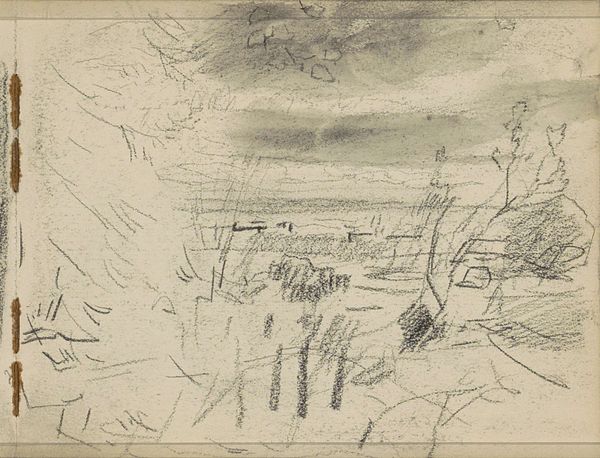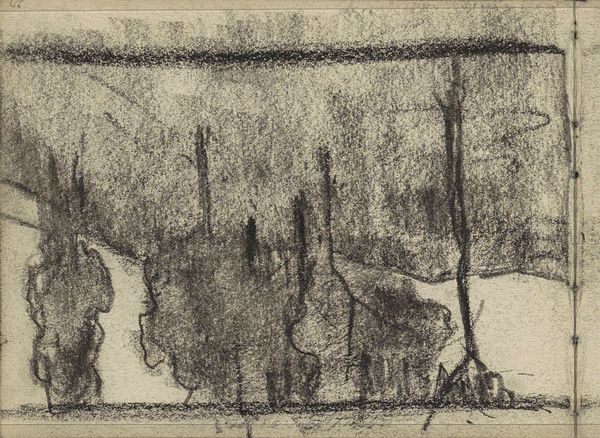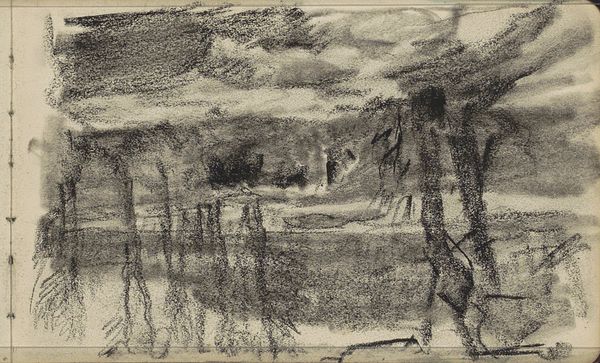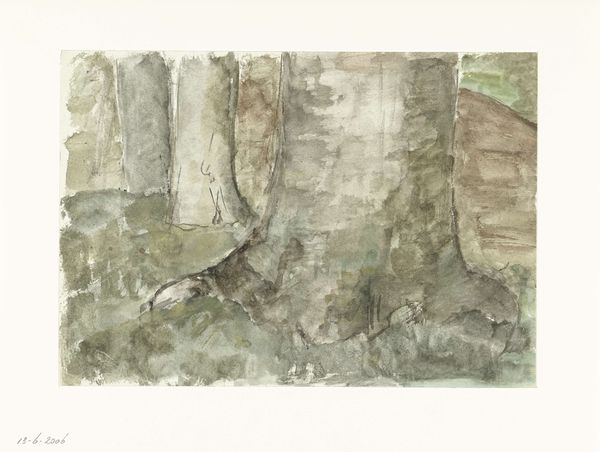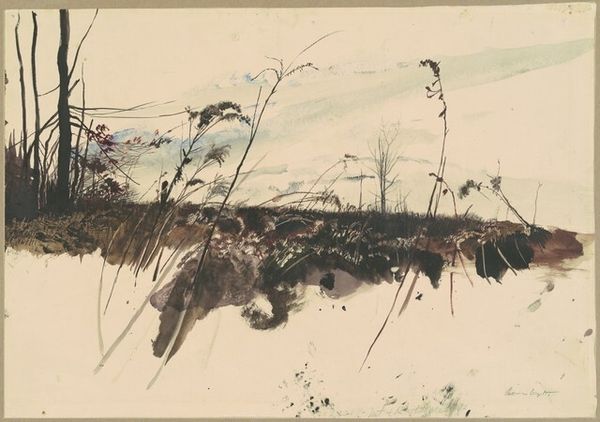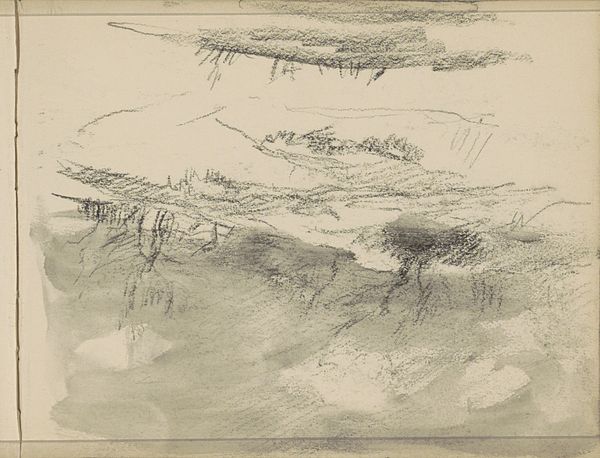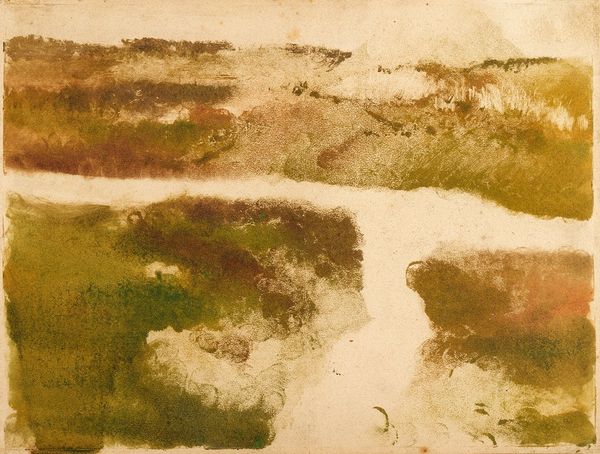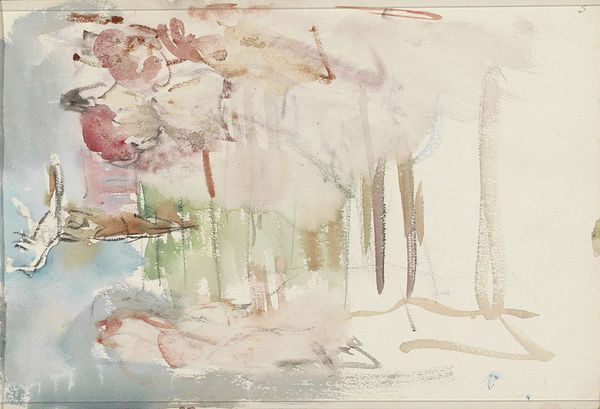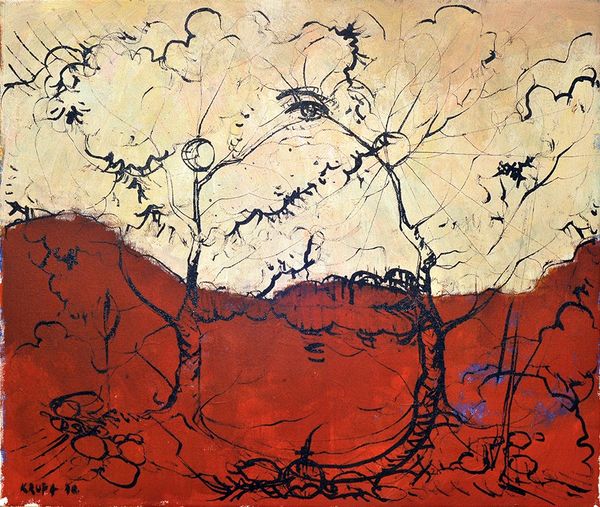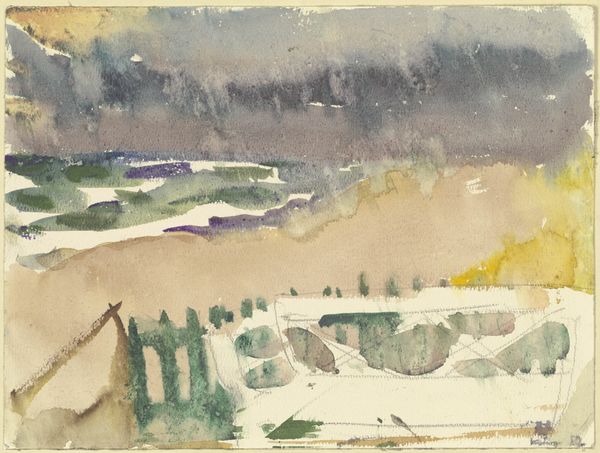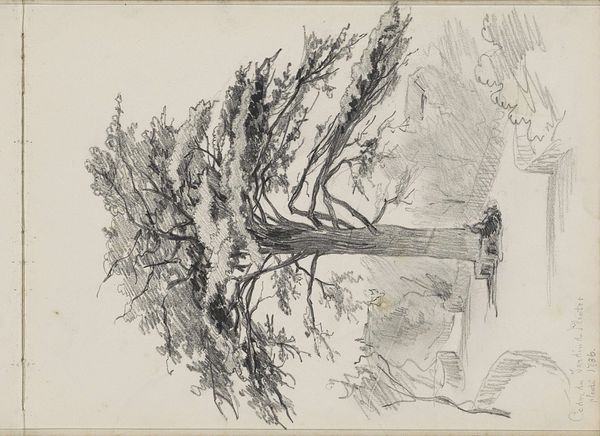
drawing, watercolor, pencil
#
drawing
#
landscape
#
abstract
#
form
#
watercolor
#
pencil
#
expressionism
#
line
#
cityscape
Copyright: Public Domain: Artvee
Paul Klee made "Road Branch" in 1913, probably using watercolor, ink, and a playful sense of line. You can see how Klee is exploring how to make a mark, not just describe a scene. The colors are translucent, like memories. Look at the lower part of the painting: the paper peeks through the washes of pink and peach, giving it a raw, almost unfinished quality. But this isn’t a mistake; it’s where the painting breathes. Then, these frenetic black lines suggesting figures on bikes, walking along a path, disrupt the tranquility of the scene. Each mark feels deliberate, as though Klee is wrestling with the image, questioning what needs to be there. Klee's work reminds me a little of Cy Twombly’s scribbles—both artists share this ability to turn simple lines into worlds of feeling and suggestion. “Road Branch” isn’t just a landscape, it’s like Klee is inviting us to get lost in his thoughts.
Comments
No comments
Be the first to comment and join the conversation on the ultimate creative platform.

